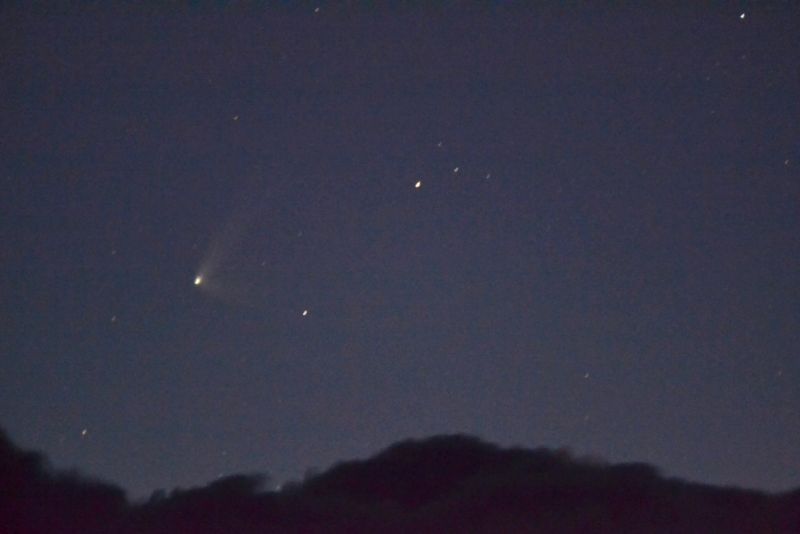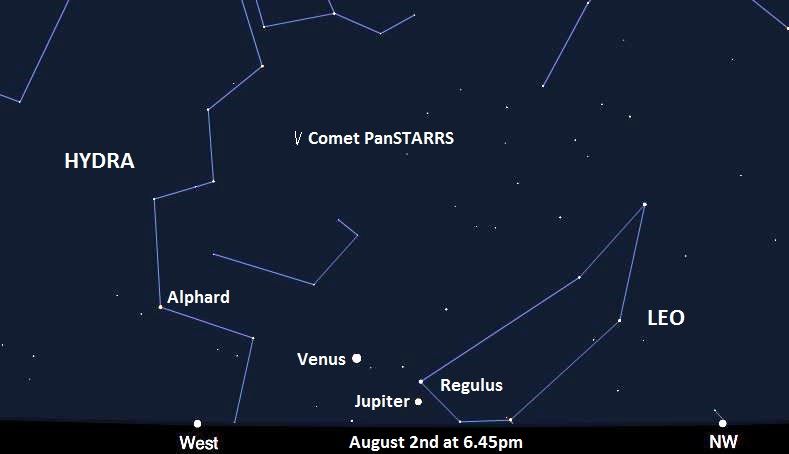Comets
Comet C/2014 Q1 PanSTARRS
by Ian Cooper
Comet C/2014 Q1 PanSTARRS put on a brief display in the early evening in July before the brightening moon put the comet beyond viewing until the beginning of August. Once the moon starts to depart the evening sky on August 2, the comet will be a binocular/telescope object sitting in the north-western sky (see chart attached).The comet is slowly moving up and away from the horizon over the following weeks.
This comet was conspicuous for the displaying of two tails. This isn’t totally uncommon. Comets can even display three tails but mostly we see the ion or gas tail pointing directly away from the Sun under the influence of the Sun’s energy in the form of the solar wind. In fact it was observations of the disturbances in the ion tail of many comets that convinced astronomers that there was such a thing as the ‘solar wind’.
The second tail can often be the brighter of the two. The second tail is made of heavier dust particles that fall back along the path of the comet. Often appearing a yellow colour, the curving arch of the dust tail has been one of the most prominent features in many great comets.
This comet was different in that the two tails were seen at right angles to each other. Comet PanSTARRS was best seen in bino’s and shone at around 5th magnitude, so it wasn’t a great comet by any means. But it was a nice little treat for those who made the effort to chase after the two tails.
This comet was conspicuous for the displaying of two tails. This isn’t totally uncommon. Comets can even display three tails but mostly we see the ion or gas tail pointing directly away from the Sun under the influence of the Sun’s energy in the form of the solar wind. In fact it was observations of the disturbances in the ion tail of many comets that convinced astronomers that there was such a thing as the ‘solar wind’.
The second tail can often be the brighter of the two. The second tail is made of heavier dust particles that fall back along the path of the comet. Often appearing a yellow colour, the curving arch of the dust tail has been one of the most prominent features in many great comets.
This comet was different in that the two tails were seen at right angles to each other. Comet PanSTARRS was best seen in bino’s and shone at around 5th magnitude, so it wasn’t a great comet by any means. But it was a nice little treat for those who made the effort to chase after the two tails.

